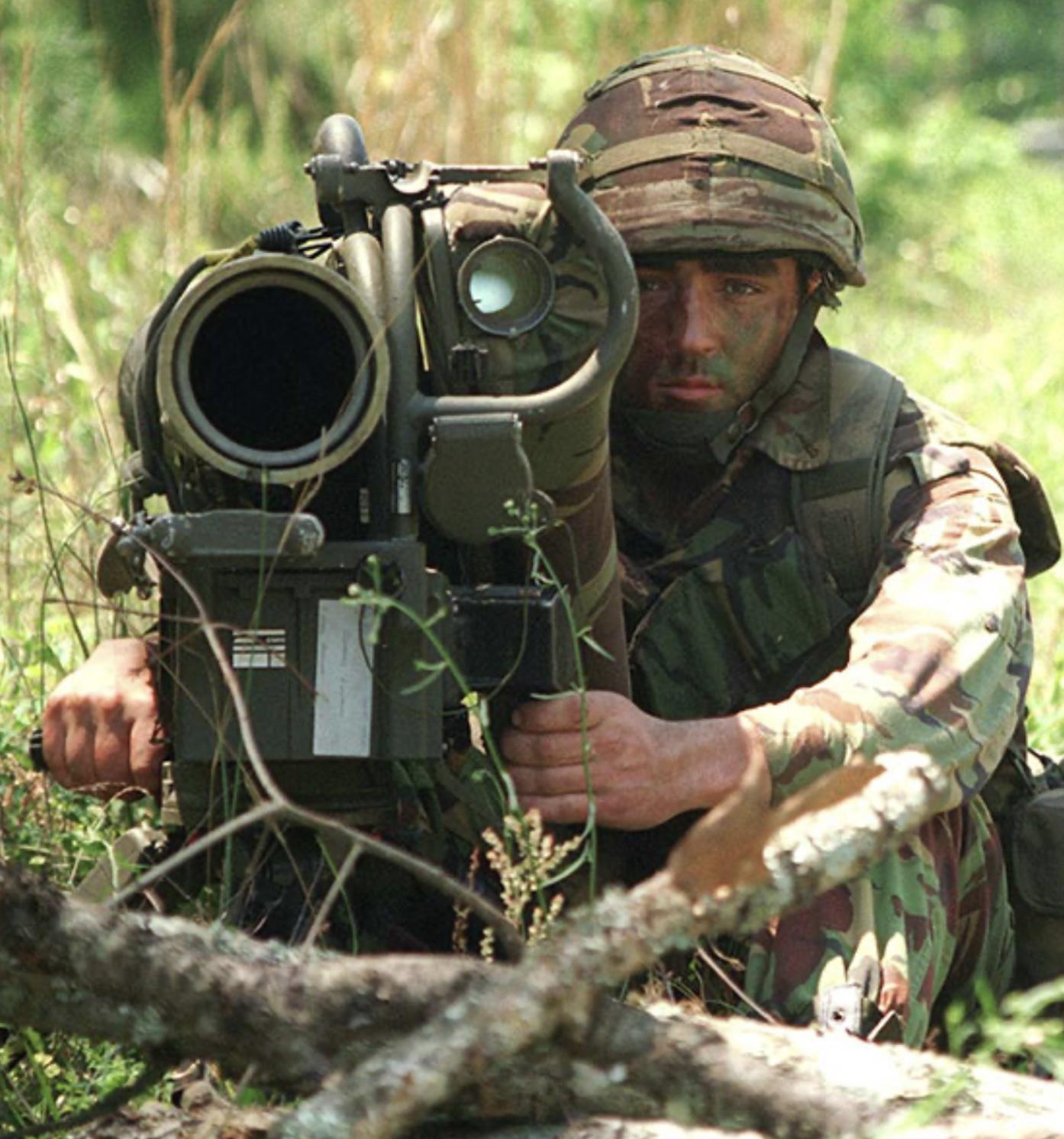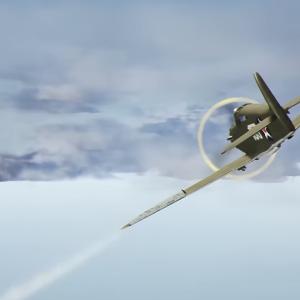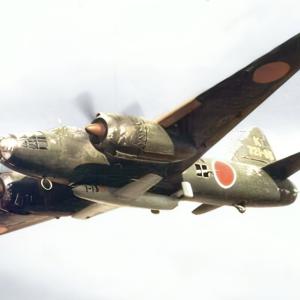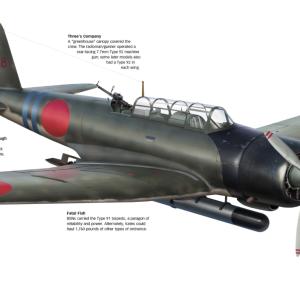
Milan weapon
The MILAN anti-tank guided missile system, whose name derives from a French acronym meaning "light infantry anti-tank missile," was a joint development between France and West Germany that began in the late 1960s. Designed as a man-portable, medium-range missile system, the MILAN was intended to give infantry forces the ability to effectively engage and destroy armored vehicles. It soon became widely adopted across NATO forces and entered service with the British Army in the 1970s.
This system was particularly appealing to British military planners because of its balance of portability, reliability, and accuracy. It employed a semi-automatic command to line of sight (SACLOS) guidance system, which meant that an operator had to keep the crosshairs of a sighting unit fixed on the target while the missile was in flight. The missile received directional corrections through a fine wire that trailed behind it, adjusting its course as needed until impact. Although this required the operator to maintain visual contact with the target, it also ensured a high level of accuracy when operated by trained personnel.
Typically deployed from a tripod-mounted launcher, the MILAN carried a shaped-charge warhead capable of penetrating tank armor. Despite its original design as an anti-tank system, its versatility allowed it to be used effectively against a range of hardened targets, including bunkers and fortified positions. British forces equipped their airborne and infantry units with the MILAN, recognizing its potential value in rugged or isolated environments where traditional armored support might not be available. This assessment proved accurate when the weapon was called into service during the Falklands War.
The Falklands War, fought between the United Kingdom and Argentina in 1982, presented British forces with a challenging operational environment. The islands were characterized by steep, rocky terrain, waterlogged peat bogs, and minimal infrastructure. British troops had to conduct long marches across open ground with little opportunity for mechanized support. In this context, the MILAN system's portability and destructive power made it an essential part of the British campaign to retake the islands.
Deployed by airborne troops, Royal Marines, and various infantry units, the MILAN was used to supplement small arms fire and light artillery. Teams carried the launchers and missiles on foot, often under harsh weather conditions. The ability to deploy the system quickly and operate it with minimal logistical support allowed British units to use it in a variety of tactical scenarios. One of the key advantages of the MILAN in the Falklands was its infrared-capable sighting unit, which enabled British forces to operate effectively in low-light and nighttime conditions—an important factor given the emphasis on night assaults throughout the campaign.
In combat, the MILAN proved highly effective against fixed Argentine defensive positions. At Mount Longdon, British troops used it to destroy enemy bunkers and suppress machine gun fire, thereby easing the advance of infantry forces. Though initially designed to defeat armored vehicles, the missile’s shaped charge produced devastating results when used against sandbagged or timber-reinforced positions. One widely discussed incident involved the destruction of a heavily fortified Argentine post, which opened the way for British troops to press their attack with fewer casualties.
A similar tactical approach was taken during the battle for Wireless Ridge. British forces used the MILAN to fire on Argentine positions from standoff distances, reducing the risk to advancing infantry. Even when not aimed directly at a visible target, the weapon was used to fire into suspected enemy strongholds as a form of suppression or psychological pressure. The noise and explosive power of the missile had a demoralizing effect on Argentine troops, contributing to British dominance in night fighting and final assaults.
In addition to its combat role, the MILAN served as a deterrent against Argentine armored vehicles, even though few such vehicles were deployed in the conflict. Its presence forced enemy commanders to take precautions, limiting their ability to concentrate forces or prepare counterattacks. British commanders praised the system for its dependability, accuracy, and relative ease of use in field conditions.
From a technical standpoint, the MILAN performed well under the challenging conditions of the Falklands. Its SACLOS guidance system required that the operator remain exposed during missile flight, but when properly used, it offered a high probability of striking the target on the first attempt. The wire-guided nature of the missile did present some limitations, especially in high winds or rough terrain, but these were manageable given adequate training and preparation.
The missile’s warhead, originally intended to penetrate the heavy armor of Cold War-era tanks, proved more than capable of defeating field fortifications. When striking bunkers, machine gun nests, or field shelters, the shaped charge created lethal overpressure and fragmentation effects. This meant that the MILAN could fulfill a dual role, acting not only as a counter to armored threats but also as a tool for destroying entrenched infantry positions.
Despite these advantages, the system was not without drawbacks. It was relatively heavy, particularly when carried over long distances by foot soldiers, and it required a crew of at least two to operate efficiently. The need for a clear line of sight and the vulnerability of the guidance wire to environmental factors could sometimes limit its effectiveness in cluttered or obstructed terrain. Nonetheless, these issues were outweighed by the tactical flexibility and firepower the system brought to light infantry operations.
The success of the MILAN in the Falklands War reinforced the value of portable anti-tank and multi-role guided missile systems in British military doctrine. Following the war, the British Army continued to invest in upgraded versions of the MILAN, including models with improved warheads and night-fighting capabilities. The experience gained during the conflict also influenced training, emphasizing the integration of missile teams into broader infantry tactics and the importance of combined-arms coordination.
Eventually, newer systems such as the Javelin replaced the MILAN in British service, offering fire-and-forget capabilities and greater automation. Still, the MILAN's performance during the Falklands War left a lasting impression. It demonstrated that with the right tools, light infantry units could overcome entrenched defenses and operate effectively in remote, hostile environments. The system’s legacy lies in its contribution to that victory and the lessons it provided for future operations.










